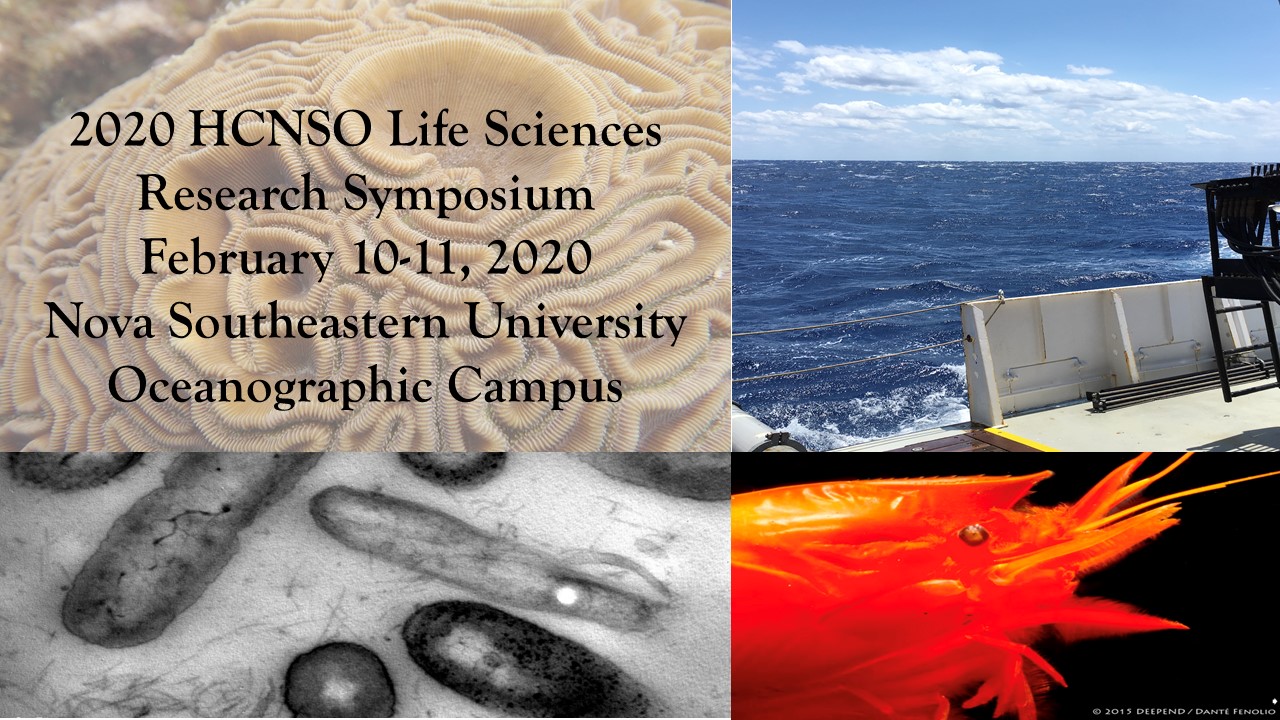Climate-driven changes in patterns of larval dispersal and connectivity of spawning corals can be predicted based on egg size
Location
HCNSO Guy Harvey Oceanographic Center Nova Southeastern University
Start
2-10-2020 3:30 PM
End
2-10-2020 3:45 PM
Type of Presentation
Oral Presentation
Abstract
A major goal of climate change research is to predict changes in the distribution and abundance of species, processes that are shaped by dispersal patterns. Predicting how dispersal patterns will be altered by ocean warming entails quantitatively assessing the effect of increased temperature on larval developmental rates. For scleractinian corals, the larval development times for all species cannot be readily measured. However, we know that a large proportion of the interspecific variation in local larval retention can be explained by the minimum time to competency, and for broadcast spawning species, the latter can be estimated based on a readily measurable species trait: egg size. To determine if changes in dispersal patterns could also be predicted based on egg size, we assessed the effect of +2°C warming on the time larvae of seven species (encompassing a broad range of egg sizes). Our results indicate that interspecific variation in dispersal patterns, particularly local larval retention, can be approximated at the assemblage level without the need to calibrate the effect of temperature on the minimum time to acquire competency separately for hundreds of coral species. We predict that species with larger eggs will experience greater changes in dispersal, namely increases in local retention.
Climate-driven changes in patterns of larval dispersal and connectivity of spawning corals can be predicted based on egg size
HCNSO Guy Harvey Oceanographic Center Nova Southeastern University
A major goal of climate change research is to predict changes in the distribution and abundance of species, processes that are shaped by dispersal patterns. Predicting how dispersal patterns will be altered by ocean warming entails quantitatively assessing the effect of increased temperature on larval developmental rates. For scleractinian corals, the larval development times for all species cannot be readily measured. However, we know that a large proportion of the interspecific variation in local larval retention can be explained by the minimum time to competency, and for broadcast spawning species, the latter can be estimated based on a readily measurable species trait: egg size. To determine if changes in dispersal patterns could also be predicted based on egg size, we assessed the effect of +2°C warming on the time larvae of seven species (encompassing a broad range of egg sizes). Our results indicate that interspecific variation in dispersal patterns, particularly local larval retention, can be approximated at the assemblage level without the need to calibrate the effect of temperature on the minimum time to acquire competency separately for hundreds of coral species. We predict that species with larger eggs will experience greater changes in dispersal, namely increases in local retention.


